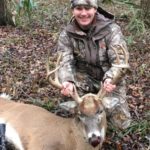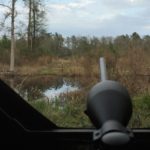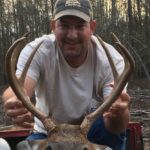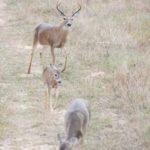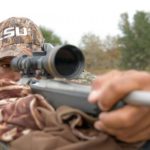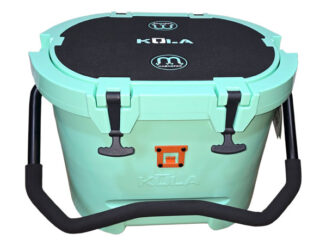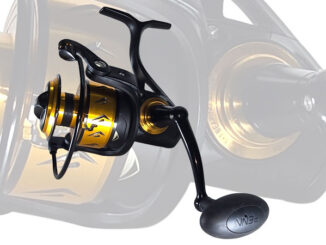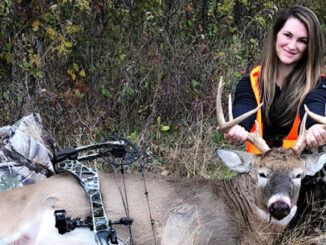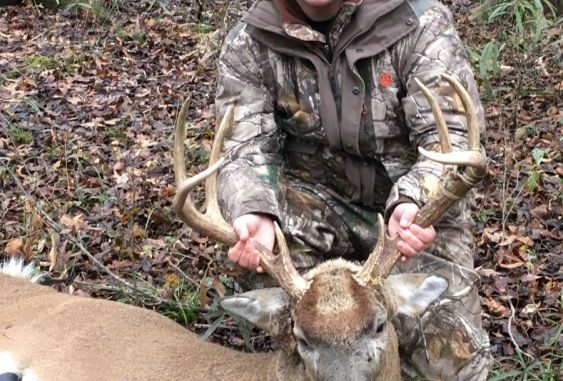
Bucks have to venture out of their comfort zones to pursue hot does. Use these ‘big tips’ to score during the rut.
Behind my house five years ago at 5 p.m., I killed a buck that I captured on camera 4 miles down the road at 2 a.m. that very same morning.
Four miles may not seem like a lot of ground to cover in 15 hours, but it forever solidified in my mind the fact that rutting bucks are constantly on the move.
And just think how many loaded rifles that deer slipped before walking out in my plot like a boss.
A few miles up the road from my house, Alan Fussell, a lifelong deer hunter who has refined his techniques in the pine stands of Washington Parish, has experienced much the same thing during our rut.
“Bucks have core areas where they stay all summer long,” he said. “Then I think they have an area they go to during the rut. I finally killed a deer last year that I saw during the rut three years in a row. But I never saw him any other time where I hunt.”
Fussell, who is a member of the Horseshoe Hunting Club near Franklinton, keeps feeders out all year long — and he never got a picture of this buck any time other than the rut.
“He would leave right after the rut and show up back at my stand about December 15th every year,” Fussell said. “During October, he was probably 6 miles away. My buddy had pictures of him the entire month of October before he came back to my place for his last time last year.”
These core areas are much like our houses.
Like humans, deer spend much of their time outside the rut in the security of their home base, where they are just about impossible to fool. Not much different from us being able to feel our way through our house when the lights are out, deer in their core area know every little nook and cranny, and live in relative peace and comfort.
But when they step outside their safe spaces, they walk into unfamiliar surroundings — and make fatal mistakes.
Look down long lanes
While there is a time to try to get up close and personal with a buck, Fussell feels like the rut is not that time.
In the pine stands that he hunts, he likes to set up box stands in locations that give him maximum visibility down a long lane or road. Pine trees set up great for this since the thinning process leaves lanes that can be maintained for as long as the trees continue to grow.
Logging roads that span clear-cuts after all the trees are eventually removed offer the same possibilities, as long as they aren’t allowed to grow up over time.
“When the rut starts, I want to hunt a long food plot that has lots of crossings on it,” Fussell said. “I have plots on roads and on power lines that allow me to see a long way. They’re going to come to the plots during the rut because that’s where the does are, but they aren’t coming for food; they’re coming for the hot does.”
The presence of many different crossings on these long plots provides Fussell ample opportunity to catch a buck that’s on the move.
“With a long lane you’ve got a lot to look at so you’ve got to be on your toes,” said Fussell. “When they cross they’re probably going to be moving quick, so keep scanning and be ready with your rifle.”
Give them a grunt
With so many bucks on the move during the rut, it’s entirely possible one could slip by without you noticing it. That’s why Fussell relies on grunt calls to pull them out in the open.
“If I’m not having any action, I’ll break them out,” he said. “I actually keep three set up – one that sounds like a doe bleat, one that sounds like a young buck and one that sounds like a mature buck.”
Fussell hits the doe bleat a time or two before alternating the other two, with the intent of making sounds of a mature buck defending his hot doe from a young buck trying to move in on his territory.
One thing he has learned by playing around with his calls is the more aggressively and loudly he blows, the more effective they tend to be.
“I used to blow them kind of quiet,” Fussell said. “Then I started trying different things to see what those young bucks would react to. It took me making a commotion before they would even look my way. Now I believe that if I have a buck way out or out of sight, he’s going to come running if I hit those calls hard.”
Since bucks could be anywhere around him as they cruise for hot does, Fussell likes to blind call with his fighting grunts every 30 minutes or so. That way he stands a good chance of pulling in a buck that might not have otherwise crossed his lane.
Put out the perfume
Perfume is a powerful attractant that tends to stick to our brains like some kind of girl Gorilla Glue — and bucks are no different. When they smell a doe in heat, they’re going to come running — or at least pay close attention.
With so many scents lining the deer-attractant aisle at sporting goods stores, it’s challenging to figure out which one to buy.
“I just stick with the old school Tink’s 69,” Fussell said. “It’s worked for me over the years, so I stick with it. I used to just sprinkle some out on the bushes but eventually figured out I was leaving scent behind when I wasn’t in the stand.
“That’s not what you want.”
Fussell now uses scent wicks so he can pull them in when he exits.
“That way the scent is there only when I’m there,” he added. “Plus you can stick those wicks back down in the bottles. It’s pretty easy to deal with that way.”
Rather than just use scent with no rhyme or reason, Fussell always puts it out so the wind will carry it toward bedding areas, or in whatever general direction he believes bucks will be coming from.
Watch the wind
“If a buck is not chasing a doe, he’s traveling upwind to catch one,” Fussell said. “I wish I would have realized how big of a deal the wind was when I was younger. It’s a huge factor in hunting rutting bucks, but at the same time, they’re just love-struck enough to not pay it any attention.”
Bucks are going to come in from downwind to scent-check a plot for does before they step out into the open. While some hunters may try to set up downwind of where they believe a buck will set up to sniff out a plot, Fussell feels hunting the long lanes helps him avoid that situation altogether.
“On those long lanes, when a buck tries to circle around and get down wind, they’re going to move down 80 to 100 yards and still cross my lane 100 yards in front of me,” he explained. “So I guess it’s the same concept of getting behind where they’re going to scent-check, but I don’t have to worry about continually adjusting my position since I’ve got so much real estate in front of me.”
After that explanation, Fussell mentioned that he believes bucks are less likely to try to smell him or try to see him during the rut.
“They get tunnel vision,” he said. “It’s like having blinders on a race horse to keep them focused only on the mission at hand. Rutting bucks throw caution to the wind and pretty much have a one-track mind when it comes to finding a hot doe.”
That’s not to say hunters should throw caution to the wind like bucks do. Rather, you’re more likely to get a free pass on a mistake during the rut than you would any other time of year.
Be a sharp shooter
When hunting long lanes, it pays to be able to make a shot out to 250 yards or so. Fussell has killed several rutting bucks at 250 yards, but he tries to keep it under that distance.
“Even though I can see a lot farther, I’m not very likely to take a shot over 250,” he said. “I shoot a Ruger .308, so I can get on out there and touch them long distance, but I don’t see any need in trying to shoot one at 300 yards.”
Even taking shots at 250 yards means practicing at that distance before making an unethical shot at a deer. Understanding ballistics and having a high-quality scope can pay big dividends, as will learning how high you’re going to have to hold over at different ranges.
According to an article written by Brian McCombie for Outdoor Life, zeroing your rifle at 200 yards rather than 100 yards will help you make longer shots.
McCombie’s premise is that zeroing a .308 at 100 yards means you would have to hold over about 16 inches on a buck standing 300 yards away. But with a 200-yard zero, you’re hold over is only 9 or 10 inches – a much easier shot considering your crosshairs wouldn’t be hovering in thin air.
Everything in Fussell’s bag of rut tricks seems to be big. Big lanes, big grunts, big smells, big stands and big shots.
And for him, the end result is big bucks.
During the rut, bigger is definitely better.
